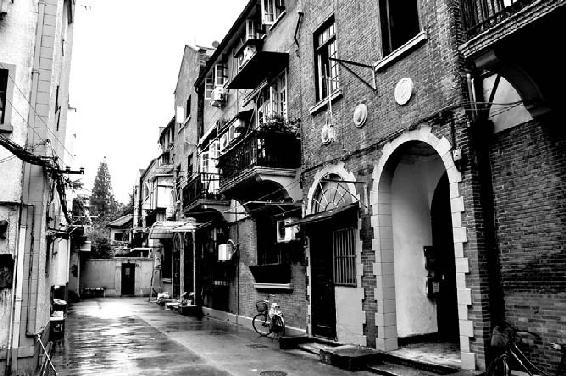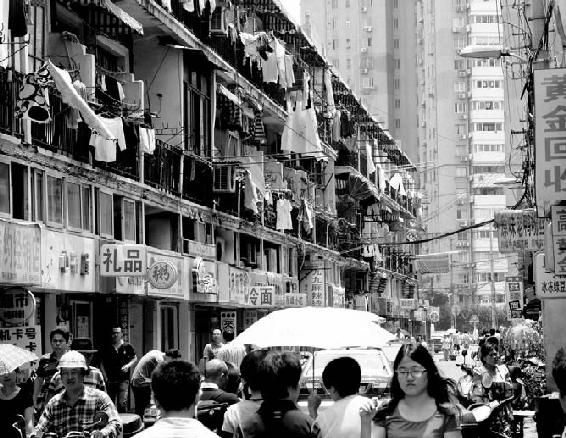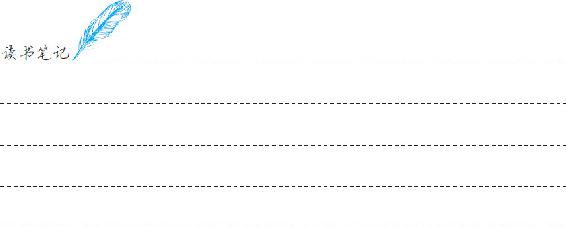One unique cultural element in Shanghai is the Shikumen(石库门)residences, which are two- or three-story townhouses with the front yard protected by a high brick wall. Each residence is connected and arranged in straight alleys, known as a longtang(弄堂),pronounced longdang in Shanghainese. The entrance to each alley is usually surmounted by a stylistic stone arch. The whole resembles terrace 3 houses or townhouses commonly seen in Anglo-American countries, but distinguished by the tall and heavy brick wall in front of each house. The name "Shikumen" means "stone storage door", referring to the strong gateway to each house.
上海的一个独特文化景观就是石库门,它是一栋两层或者三层的别墅,由高高的砖墙围着前院。每家每户互相连接,形成一条笔直的小巷,这就是弄堂。弄堂的入口通常会架起一个别具特色的石拱。这样的整排房屋和英美的连栋房屋很像,但不同的是,这里的每一栋房屋门前都有一道坚固的石墙。“石库门”指的是“石头做的仓库门”,也就是指每栋房子坚固的大门。

Because of Shanghai's status as the cultural and economic center of East Asia in the first half of the twentieth century, it is popularly seen as the birthplace of everything considered modern in China. It was in Shanghai, for example, that the first motor car was driven and (technically) the first train tracks and modern sewers 4 were laid. It was also the intellectual battleground of writers who concentrated on critical realism, which was pioneered by Lu Xun and Mao Dun.
鉴于上海20世纪上半叶居于东亚的文化、经济中心地位,通常城市上海被认为是中国现代化的发源地,例如:上海拥有第一辆机动车,严格意义上拥有第一条火车轨道,是最先铺设现代排水系统的城市。上海也是以鲁迅、茅盾为先驱的社会主义作家的战场,他们专注于批判现实义。

Other Shanghainese cultural artifacts include the cheongsam (Shanghainese: zansae), a modernization of the traditional Manchurian qipao. This contrasts sharply with the traditional qipao, which was designed to conceal the figure and be worn regardless of age. The cheongsam went along well with the western overcoat and the scarf, and portrayed a unique East Asian modernity, epitomizing the Shanghainese population in general. As Western fashions changed, the basic cheongsam design changed, too, introducing high-neck sleeveless dresses, bell-like sleeves, and the black lace frothing at the hem of a ball gown. By the 1940s, cheongsams came in beaded bodices, matching capes and even velvet. Later, checked fabrics became also quite common. The Shanghainese styles have seen a recent revival as stylish party dresses and the fashion industry has been rapidly revitalized in the past decade.
具有上海文化特色的手工艺品还有旗袍,它是传统满族旗袍的现代版。传统旗袍掩盖身材,而且任何年龄均可穿着。现代版旗袍搭配西式外套和围巾,塑造出一种独特的东亚现代特质,成为上海流行风尚的缩影。旗袍的式样也跟随西方时尚变化而变化,出现了高领无袖、钟形袖和黑色蕾丝泡泡镶边的款式。到20世纪40年代,旗袍上部钉珠,搭配披肩甚至天鹅绒,之后,格子布做的旗袍也非常普遍。最近上海服饰作为时髦的晚会礼服又时兴起来,上海时尚业在过去十年中飞快地复苏。

1. residence [ˈrezidəns] n. 住宅,住处
例 The house is currently run as a country inn, but could easily convert back into a private residence.
这栋房子目前被当作一家乡村客栈用,但可以容易地改回成一所私用住宅。
2. stylistic [staiˈlistik] adj. 体裁上的;格式上的;文体论的
例 When translating something, you must follow the stylistic pattern of source text.
翻译时一定要符合原文的文体风格。
3. terrace [ˈterəs] n. 阳台,平台;梯田
例 terraced house
(英)排屋中的一栋房屋
4. sewers [ˈsu:ə(r)] n. 下水道
例 About 10 catfish were found swimming in the sewer.
在下水道里发现了大约有10只的鲶鱼。
5. battleground [ˈbætlˌgraund] n. 战场
例 Children's literature is an ideological battleground.
儿童文学是各种意识形态交锋的战场。
6. artifacts [ˈa:rtifækts] n. 人工产品
例 During colonial times, archaeologists hauled off Babylon's artifacts to Europe.
在殖民时代,考古学家们把巴比伦的文物带到了欧洲。
7. cheongsam [ˈtʃɔːŋˈsæm] n. 旗袍
例 I want to by a cheongsam for my sister.
我要给我妹妹买件旗袍。
8. Manchurian [mænˈtʃuəriən] adj. 中国东北的;满洲的
例 The Qing Dynasty was itself "foreign", the product of a Manchurian overthrow of the Ming Dynasty.
清朝本身就是外来者,是满洲人推翻明朝建立的。
9. epitomize [iˈpitəmaiz] v. 概括;摘要;成为…的缩影
例 Lyonnais cooking is epitomized by the so-called "bouchons".
被称作bouchon的里昂小餐馆是里昂饮食的缩影。
A: Where have you been these days?
这几天你去哪了?
B: I have been to Shanghai--the economic center of China.
我去上海了,它可是中国的经济中心哟。
A: Is there anything special in Shanghai?
上海有什么特别的地方吗?
B: Of course there is. The most typical scenery in Shanghai is Longtang.
当然有了,上海最典型的景观要数它的弄堂了。
A: What will come to your mind when it comes to Shanghai?
一提到上海,你会想到什么?
B: The first thing which comes to my mind is qipao. I think it is a symbol of Shanghai in the 1920s.
我能想到的第一种东西就是旗袍,我认为它是20世纪20年代上海的象征。
A: I always think of Eileen Zhang when people talk about Shanghai, and you?
人们提到上海的时候我总是能想到张爱玲,你呢?
B: I feel the same. Many novels of Eileen Zhang are based on Shanghai.
我也有同感,张爱玲的许多小说都是以上海为背景的。
说起上海的石库门(Shikumen)就不得不提起中国各地的民居特色了。中国地大物博,各个民族、各个地区都有其典型的居住特色。北京的四合院(Chinese quadrangles)尤为典型,还有福建客家土楼(Hakka Earth building),西北的窑洞(cave dwelling),北方草原的蒙古包(Mongolia Yurt),西双版纳的竹楼(bamboo house)等。各种民居形式应有尽有。


免责声明:以上内容源自网络,版权归原作者所有,如有侵犯您的原创版权请告知,我们将尽快删除相关内容。















